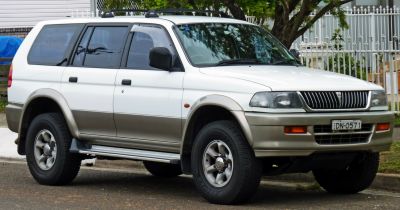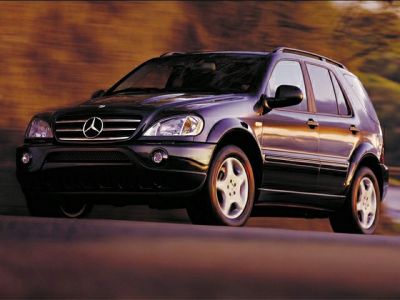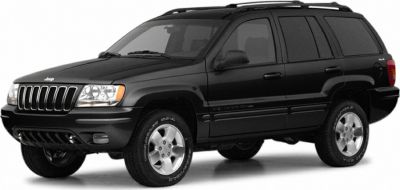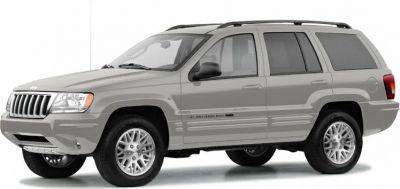 1995 Nissan Pathfinder II Dimensions, Size & Specs
1995 Nissan Pathfinder II Dimensions, Size & SpecsMeasurements of the 1995 Nissan Pathfinder II, engineered for optimal performance and comfort
| Dimensions | |
|---|---|
| Length: | 4530-4640 mm178.3-182.7 in14.9-15.2 ft |
| Width: | 1820-1840 mm71.7-72.4 in6.0-6.0 ft |
| Height: | 1750-1800 mm68.9-70.9 in5.7-5.9 ft |
| Trunk Capacity: | 435-1076 liter15.4-38.0 cu ft |
| Trunk Capacity (Max): | 1670-2407 liter59.0-85.0 cu ft |
| Weight Specifications | |
| Curb Weight: | 1870-1990 kg4123-4387 lbs |
| Maximal permitted Weight: | 2360-2404 kg5203-5300 lbs |
| Tire Specifications | |
| Tire Sizes: |
|
The Nissan Pathfinder II, produced from 1995 to 2004, is a mid-sized sport utility vehicle (SUV) that marked a significant evolution in Nissan's SUV lineup. Designed with rugged utility and family-friendly versatility in mind, this generation of Pathfinder combined a robust build with practical dimensions. Its overall length ranges from 4530 mm to 4640 mm (178.3 to 182.7 inches), making it comfortable for urban driving while spacious enough for off-road capability. The width varies between 1820 mm and 1840 mm (71.7 to 72.4 inches), and the height spans from 1750 mm to 1800 mm (68.9 to 70.9 inches), giving it a commanding road presence and ample headroom inside. Curb weight falls between 1870 kg and 1990 kg (4123 to 4387 lbs), reflecting its sturdy construction, with a maximum weight capacity from 2360 kg up to 2404 kg (5205 to 5300 lbs), suitable for hauling passengers and gear. Cargo space underscores its versatility with a luggage capacity ranging from 435 liters to 1076 liters (15.3 to 38 cubic feet), expandable dramatically to 1670 liters up to 2407 liters (59 to 85 cubic feet) when rear seats are folded down. This makes the Pathfinder II highly practical for family trips or carrying equipment. The SUV was equipped with various tire sizes, including 235/70 R15, 245/70 R16, 255/65 R16, and 245/65 R17, balancing on-road comfort with off-road traction. Overall, the Nissan Pathfinder II remains a reliable and well-sized SUV option for those seeking a blend of space, utility, and ruggedness in the late 1990s and early 2000s automotive market.
Discover the standout features that make the 1995 Nissan Pathfinder II a leader in its class
Have a question? Please check our knowledgebase first.
The Nissan Pathfinder II, produced between 1995 and 2004, has a length ranging from 4530 mm to 4640 mm. In imperial units, this translates to approximately 178.3 inches (14.86 feet) to 182.7 inches (15.23 feet). This moderate SUV length positions the Pathfinder II as spacious enough for comfortable passenger seating and cargo needs, yet compact enough for urban driving and parking. The variation in length typically depends on factors like specific model trims or optional equipment, which might slightly affect the vehicle's overall dimensions. This length is ideal for those who want a robust SUV that balances cabin space and drivability.
The width of the Nissan Pathfinder II ranges from 1820 mm to 1840 mm, which converts to roughly 71.65 inches to 72.44 inches (about 5.97 to 6.03 feet). This width provides a stable road presence and contributes to a comfortable interior cabin with enough shoulder room for passengers. A wider vehicle dimension typically results in better handling stability, especially for SUVs, and the Pathfinder II manages to have a broad stance without sacrificing the ability to navigate through urban environments or tight parking spaces.
The height of the Nissan Pathfinder II varies from 1750 mm to 1800 mm, which is approximately 68.9 inches to 70.9 inches (about 5.74 to 5.9 feet). This height is characteristic of mid-sized SUVs, providing a commanding driving position that many drivers appreciate for better visibility on the road. The elevated height also allows for greater interior headroom and increased cargo volume when the rear seats are folded. However, it maintains a relatively easy entry and exit height for passengers, balancing functionality and comfort.
The Nissan Pathfinder II's curb weight ranges from 1870 kg to 1990 kg, equivalent to approximately 4,123 to 4,389 lbs. This weight classifies it as a reasonably heavy mid-sized SUV, which impacts both performance and fuel consumption. A heavier SUV like the Pathfinder II generally offers better road stability and a solid feel when driving, especially on rough terrains or highways. However, the trade-off is relatively higher fuel consumption compared to lighter vehicles. The weight also influences acceleration and braking distances; therefore, the engine and brake system are designed to complement this mass effectively.
The Nissan Pathfinder II has a maximum weight (gross vehicle weight rating or GVWR) between 2360 kg and 2404 kg, which is roughly 5,203 to 5,300 lbs. This value represents the maximum allowable weight of the vehicle when fully loaded with passengers, cargo, and any additional load such as a trailer. This relatively high GVWR means the Pathfinder II is capable of carrying substantial loads and supports decent towing capabilities, making it suitable for hauling trailers, boats, or carrying heavy cargo. This capability enhances its appeal as a versatile SUV ideal for family trips, outdoor activities, or light commercial use.
The Nissan Pathfinder II offers a luggage capacity of 435 to 1076 liters with the rear seats up, and an expanded capacity of 1670 to 2407 liters when the rear seats are folded down. This conversion equals approximately 15.35 to 37.96 cubic feet with seats in place and 58.95 to 84.92 cubic feet with seats folded. This flexible volume makes the Pathfinder II competitive among mid-sized SUVs, providing ample space for groceries, luggage, sports gear, or even larger cargo items depending on the seating configuration. The generous maximum capacity enhances its utility for trips, camping, or daily needs.
The Nissan Pathfinder II was equipped with several tire size options: 235/70 R15, 245/70 R16, 255/65 R16, and 245/65 R17. These tire sizes provided a balance between on-road comfort and off-road robustness. Larger diameter tires (such as the 17-inch option) typically improve handling, grip, and off-road capability, while smaller tires often contribute to a smoother ride and better fuel economy. The choice of tire size allowed buyers to tailor the vehicle to their specific use, whether prioritizing ruggedness for off-roading or comfort for city driving.
Yes, the Nissan Pathfinder II generally fits into a standard garage, but with some considerations. Standard garages typically have an internal width of about 2.44 meters (8 feet), a height of around 2.13 meters (7 feet), and a length of approximately 6 meters (20 feet). With the Pathfinder II's width of up to 1.84 meters (72.4 inches or about 6 feet) and a height up to 1.8 meters (70.9 inches or about 5.9 feet), the vehicle fits with adequate clearance on all sides, although maneuvering in and out might require some care due to its larger dimensions. Garages with exact standard dimensions should accommodate this SUV comfortably, offering protection from the elements while preserving convenience.
The Nissan Pathfinder II, produced from 1995 to 2004, marked a significant evolution over the Pathfinder I (1985-1995) in terms of size, comfort, and capability. Dimensionally, the Pathfinder II grew larger, with a length up to roughly 4640 mm (182.7 inches) versus the smaller and more compact first generation. This increase provided enhanced interior space, a more refined cabin, and improved passenger comfort. The Pathfinder II offered modernized styling, improved suspension, and a range of engine options that aimed to deliver better performance and ride quality. These upgrades made the second generation more suited for family use and long-distance travel, while still retaining off-road competence, which was the hallmark of the first generation.
When comparing the Nissan Pathfinder II to contemporaneous mid-sized SUVs like the Toyota 4Runner or Ford Explorer, it stands out due to its slightly larger luggage capacity and competitive dimensions. The Pathfinder II's length (up to 4640 mm or 15.23 feet) and width (up to 1840 mm or 6.03 feet) provide a spacious cabin and cargo space comparable to or exceeding rivals. Its off-road capabilities combined with generous interior volume made it popular for both outdoor enthusiasts and families. Performance and curb weight were on par with competitors, ensuring a balanced ride and handling. Additionally, the multiple tire size options allowed it to be tailored for differing needs, blending ruggedness with on-road comfort better than some competitors of the period.
Discover similar sized cars.

| Production: | 1996-2001 |
|---|---|
| Model Year: | 1996 |
| Length: | 4530 mm178.3 in |
| Width: | 1775 mm69.9 in |
| Height: | 1730 mm68.1 in |

| Production: | 1997-2001 |
|---|---|
| Model Year: | 1998 |
| Length: | 4587-4635 mm180.6-182.5 in |
| Width: | 2190 mm86.2 in |
| Height: | 1802-1820 mm70.9-71.7 in |

| Production: | 1998-2003 |
|---|---|
| Model Year: | 1999 |
| Length: | 4613 mm181.6 in |
| Width: | 2180 mm85.8 in |
| Height: | 1762-1805 mm69.4-71.1 in |

| Production: | 2003-2004 |
|---|---|
| Model Year: | 2004 |
| Length: | 4611 mm181.5 in |
| Width: | 2180 mm85.8 in |
| Height: | 1786-1805 mm70.3-71.1 in |
